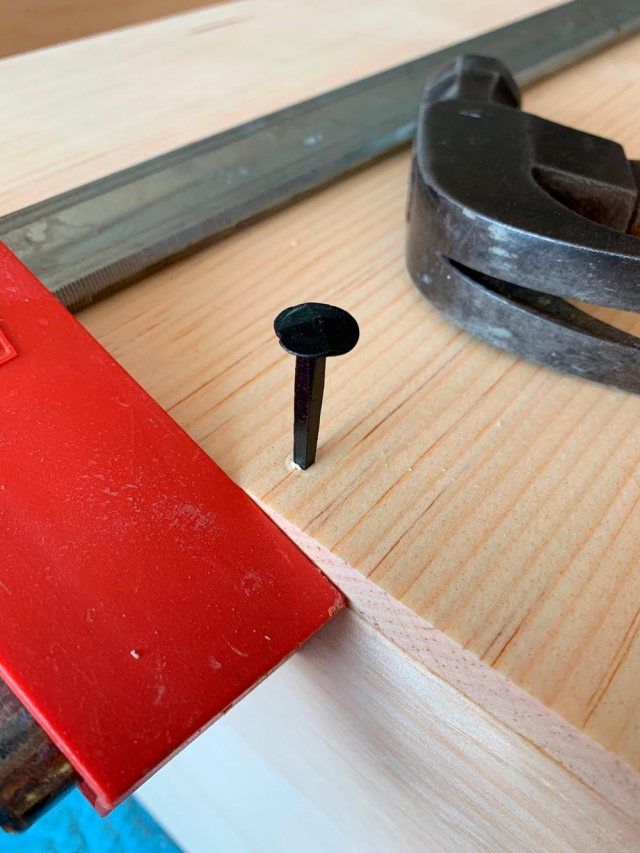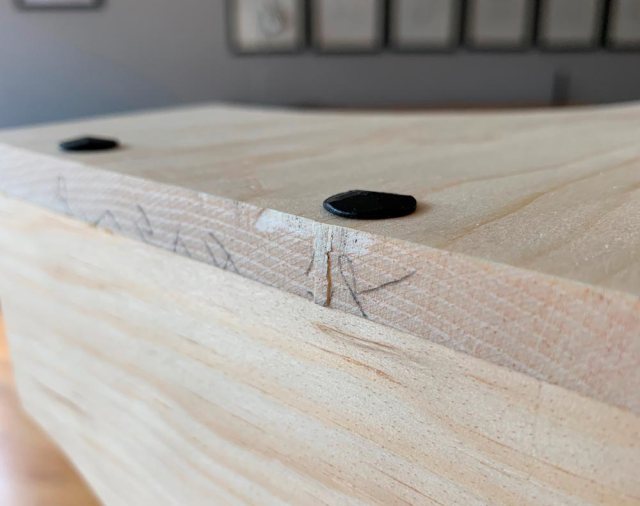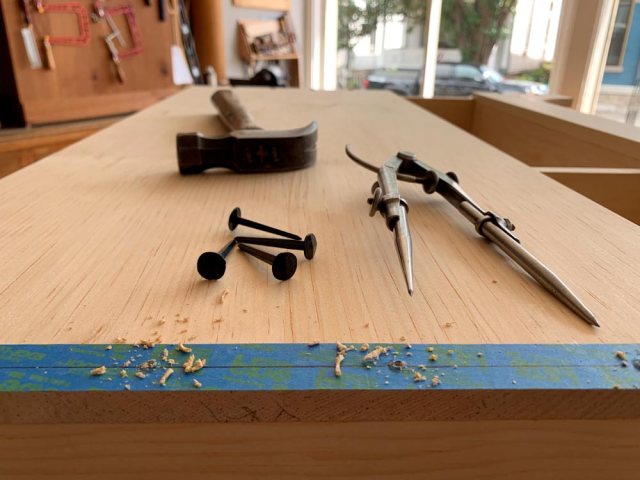
I wrote about the following trick to reduce splitting when nailing in “The Anarchist’s Design Book.” Since then, I’ve caught flack from people who say it’s not true. So much so that I’ve been doubting my own shop experience.
Here’s the problem: When you nail together a piece – especially using cut nails or Rivierre nails – it’s easy to blow out the end grain, reducing the holding power of the nail. Driving a tapered nail is a delicate balance. You need the nail to bite hard, so you don’t want to use a huge or too-long pilot hole. But if you use a pilot hole that is too small or short, the nail will split the work and ruin everything. Oh, you also have to account for the wood species and how thick it is.
It’s a balance of factors to get a good joint. (And that’s why I recommend you make a test joint before nailing together anything – especially if you’ve never worked with a particular brand of nail or species of wood.)
All this is a lot of set-up for…


Here’s the Trick
If you apply a bar clamp across the end grain of the joint, you can reduce the tendency of the wood to split out the end grain. The clamp has to apply significant pressure for this to work.
Today I tried a variety of strategies as I nailed together a mule chest using 40mm Rivierre nails. All the joints were in Eastern white pine. All the pilot holes were the same diameter (7/64”) and depth (7/8”). And all the holes were located the same distance (7/16”) from the end of the board.
Without a clamp, about half of the joints busted out the end grain (good thing I started at the rear of the chest). When I added a clamp and applied hard clamping pressure – what you would use to close a joint – the failure rate dropped to zero.
I wondered if I needed to have the clamp at full pressure. What if the clamp’s pad simply acted as a wall to prevent the end grain from fracturing? Nope. Clamp pressure – lots of it – was important to keep the joint intact while driving the nail.
I have all sorts of thoughts on why this hard clamp pressure works. But I am weary of theories. If you’ve read this far, give this trick a try yourself in the shop before pontificating in the comments.
Confession: I was greatly relieved that this trick still worked. The internet had made me doubt myself again.
— Christopher Schwarz
